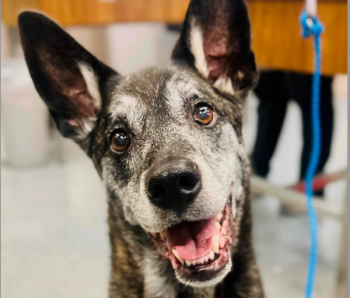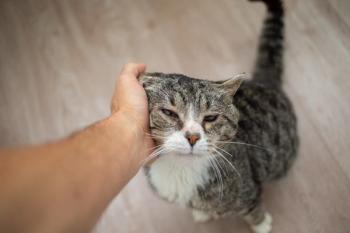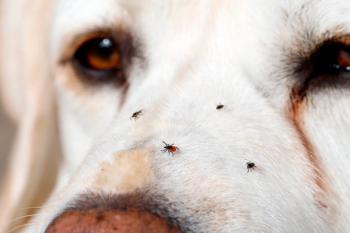
Transdermal gel delivery in cats: fuss or must? (Proceedings)
Compounded transdermal pluronic-lethicin organo (PLO) gels have become a popular method of drug delivery widely embraced by the veterinary profession, despite the lack of scientific evidence in support of this system. The PLO gels were developed as a practical alternative to traditional drug delivery systems.
Compounded transdermal pluronic-lethicin organo (PLO) gels have become a popular method of drug delivery widely embraced by the veterinary profession, despite the lack of scientific evidence in support of this system. The PLO gels were developed as a practical alternative to traditional drug delivery systems. Descriptions of the gels cannot be found in the scientific literature but are limited to class materials and other non-referenced literature distributed to educators such as Professional Compounding Companies of America.e
The gels are comprised of water-based compounds prepared in various organic solvents. The oil phase is composed of lecithin (generally of soy bean origin) which theoretically re-arranges the stratum corneum, the major barrier to drug movement across the skin. Isopropyl palmitate acts as a solvent and penetration enhancer. The water phase is comprised of purified water and a pluronic (poloxamer) gel comprised of a surfactant (pluronic F127), which also contributes to disruption of the stratum corneum. Because lecithin promotes the growth of mold, potassium sorbate is included as a preservative.36 The active drug ingredient is dissolved in either the oil (lipid) or water phase, depending on its lipid solubility. The amount of active drug added is based on the recommended dose; generally, the gel is designed such that the dose is delivered in 0.1 ml (cats and small dogs) to 0.5 to 1 ml (larger dogs). Lecithin and isopropyl palmitate (a ratio of 1:1) must comprise at least 24% of the system in order for micelles containing the drug to form properly. The remaining volume of a PLO gel is comprised of the drug and the pluronic gel. Because manufactured drug preparations often are not available in concentrations sufficient to allow delivery of the calculated dose in the small volume of PLO, purified bulk powder (which is not legal) is preferred by compounding pharmacies formulating the gels. When subjected to proper shearing forces (generally accomplished by rapidly passing the mixture between a small caliber catheter or two syringes; Figure 3), micelles containing the drug theoretically are formed. The micelles are believed to slightly disorganize the stratum corneum with minimal direct detrimental effects on the skin (based on light microscopy), although contact hypersensitivity or allergy to the lecithin component may occur (see below).37, 38 The PLO gel is appears to dissolve a variety of different chemicals, including lipophilic, hydrophilic and amphoteric compounds. The gels can be easily and rapidly prepared and theotretically are stable in most clinic environments. However, the gels are thermoreversible: at temperatures above 40°C, they are liquid, but they become high-viscosity gels following cooling to room temperature and remixing. At refrigerated temperatures, the gels again become liquid. Thus, the PLO gel becomes more viscous at higher temperatures, rendering it more amenable to topical drug delivery.
At least two PLO gels (ie, with the pluronic and oil phases already mixed) are commercially available: Lipoderm® is sold by Professional Compounding Pharmacies of America (PCCA). This organization offers compounding training classes for pharmacists, including formulation of PLO gels and recipes for the preparation of many different drug products as gels. The advent of PLO gels as a method of systemic drug delivery and the formulation of the original PLO gel was generated through the PCCA division of research.e In addition to training, PCCA sells validated ingredients to be used in compounding. However, sale and compounding guidance is limited to PCCA members; membership at the time of publication of this article costs $20,000. The financial incentive for PCCA to train pharmacists in the compounding of PLO gels intended for veterinary use is obvious. Products for formulation of PLO gels are also available through other companies (eg, Gallipot which sells a commercial PLO base as well as drugs, and chemical companies which sell pure drugs). The products that PCCA offers for sale has drawn the attention of the Food and Drug Administration: a warning letter was sent in 2001 regarding their sale of bulk substances, including dipyrone and antibiotics.d
The availability of training in the preparation of PLO gels, and the level of promotion of gels by pharmacists suggests that this method of drug delivery has been validated scientifically. Yet, a review of the literature reveals little scientific support for the use of the PLO gel system and its ability to deliver drug. Despite the lack of scientific validity, the number of compounding pharmacies that are offering compounding services, including formulation of PLO gels, is increasing as training in their preparation continues (eg, at PCCA). Recipes for veterinary PLO gels have been published in the International Journal of Pharmaceutical Compounding, a journal whose articles tend to focus on the sharing of compounding information rather than the reporting of scientific studies. The list of PLO drug recipes for veterinary use is extensive and includes but is not limited to nonsteroidal antiinflammatories, antimicrobials, anticonvulsants, prokinetic agents, anticancer drugs, behavior modifying drugs, and hormones.e
The PLO gels offer other reasons that its use (as with other novel delivery systems) should be based on demonstrated efficacy using properly controlled studies. The site of administration is likely to vary among species and possibly among animals. Currently, PLO gels are applied to the ear so that grooming by the animal will not remove the drug. Although the stratum corneum of the inner ear is the thinnest in cats, it is the site of the thickest stratum corneum in dogs. The ability of a client to accurately administer 0.1 ml of a drug repetitively needs to be addressed; unpublished studies by our laboratory using clients of the Veterinary Teaching Hospital have found the actual volume administer by clients (using weighing paper) to range to range from 0.1 (the intended volume) to 1 ml.
The vehicle for most of these topical formulations is a soy lecithin based organic gel. Soy lecithin is a common allergen in people and has been reported to cause asthma and food allergies.18,19 A suspected adverse (allergic) reaction to a topical formulation of methimazole has been (Personal Communication, Katrina Mealey, Washington State University, April 2006) in a cat. Topical reaction has also been reported with multiple dosing following experimental use of the gel in cats19 The compounded PLO product also offers an example of increased risk of drug exposure to the veterinary client. Clients should wear non-permeable gloves when administering the drug and counseled regarding inappropriate exposure of the drug to children or other pets.
Design of dosing regimens using transdermal gels is complicated by the lack of knowledge regarding the impact of the stratum corneum on drug delivery. However, to assume that a transdermal drug is 100% bioavailable following transdermal delivery is optimistic at best and as such, transdermal doses probably should be increased compared to oral doses. This may also be true for drugs characterized by first pass metabolism for three reasons. Firstly, the skin can metabolize many drugs metabolized by the liver, although the extent of metabolism is likely to be less; but secondly, no study has yet to demonstrate greater than 10% bioavailability with a drug administered transdermally. As such, a drug characterized by 50% first pass metabolism might yet be only 20% bioavailable following transdermal delivery. Finally, for many of the drugs, metabolites are equally or more active than the parent compound and first pass metabolism may not impact efficacy.
Scientific data regarding the use of PLO gels for systemic drug delivery is slowly becoming available. Methimazole is among the most common drugs formulated in a PLO gel for administration in cats and may be the most likely drug to be successfully delivered as a PLO gel because of its small molecular weight of 115 (compared to >250 for most other drugs). Additionally, response to therapy can be monitored. A clinical abstract report (uncontrolled clinical trial) cited a response to methimazole administered as a PLO gel in 9/10 hyperthyroid cats based on decreased serum T4 concentrations39 Yet, an subsequent experimental report in normal cats following single dosing of methimazole as a PLO gel found the drug reached detectable concentrations in only 2 of 6 cats but was not quantifiable in the remaining 4 cats.40 A second abstract indicates that efficacy to methimazole as a PLO gel requires 4 weeks of therapy.41 Other studies have confirmed the failure of the PLO drug delivery system to achieve therapeutic concentrations (and often detectable) in cats following single dose administration. These include amikacin,d enrofloxacin (Figure 5)d, morphined, fentanyl,42 diltiazem,43 fluoxetine,44 buspirone and amitryptylline. 45 The pharmacy profession is beginning to self-educate regarding the applicability of PLO gel use.46 Clearly the need for follow-up studies focusing on multiple dosing with PLO gels is necessary; further, the use of the gels in situations in which immediate drug response is necessary should be strictly limited to use validated by science, or for drugs in which clinical response is clearly recognized either by monitoring, or the resolution of discreet, easily identifiable clinical signs.
We have recently completed a study of transdermal drug delivery in cats. All cats were client owned. All procedures were approved by the Institutional Animal Care and Use Committee at Auburn University. The study targeted 6 cats per drug; all were owned largely by students or staff of the College of Veterinary Medicine (CVM) at Auburn University. Owners were financially compensated for their cats participation and adherence to the study protocol. Cats were studied using a randomized, placebo-controlled, double blinded (owner and investigator), cross-over design (double crossover for prednisolone and prednisone) with one week washout between each treatment. All cats both forms of the drug for a 3 week period (not all cats tolerated the complete study, explaining n<6 for some drugs); cats receiving prednisone also received prednisolone via both routes (Table 2). All drugs were compounded save amitryptylline for which a commercial product was administered (Table 2 indicates target concentration of each prepration). All oral solutions (and gels) were compounded. Each cat received a placebo of the alternative route; thus, for each phase of crossover, each cat received both an oral solution and a PLO gel. All drugs were administered at 12 hour intervals.
All preparations were made prior to the start of each crossover, meaning each preparation was 3 weeks old by study end. All placebos were prepared exactly the same as the active drug, minus the drug. All drugs were prepared by the same pharmacist. Drugs were prepared from pure substrate rather than fixed dosing forms, thus facilitating homogenous drug distribution throughout the compounded preparation. To monitor strength, samples of both placebo and active drug were collected from each preparation for each cat at each blood sampling period (eg, 7, 14 and 21 days).
Dosing: Because clinically transdermal gel doses are not modified to compensate for potential decreased bioavailability, the same dose was administered for either form of the drug (Table 2). Cats were dosed as close to 8 pm and 8 am for 21 days. The gels were prepared such that each cat received its calculated dose in 0.2 ml, with 0.1 ml applied to the internal pinna of each ear. Owners were directed to use latex gloves supplied by the investigators. In all cases, the volume of the placebo gel or a placebo solution was the same as the "active" preparation. All dosing save for the day of sample collection was performed by the owner in the home environment. Other than drug administration and travel to the study site on sampling days, all animals were handled as normal.
Table 2. Dosing and target informaiton for gel and oral preparations
Conclusions
1. Regarding administration of drug as a PLO gel: Methimazole is acceptable, buprenorphine may be acceptable (anticipate failure in 3 to 4/10 patients). Amitryptyline is acceptable only under extreme circumstances because it is characterized by marked variability and failure in 6 to 7/10 patients. Unacceptable drugs include prednisone, prednisolone, metronidazole, and enrofloxacin.
2. Failure reflects concentrations that are too low but also is characterized by marked individual differences, with absorption being negligible in some cats but being acceptable in others.
3. There is a need to identify methods by which inaccuracy and imprecision of oral and gel preparations is reduced.
4. Oral prednisone is not a therapeutic option in cats.
5. Oral metronidazole benzoate may not predictable achieve therapeutic concentrations in cats.
6. Any or all drugs offered in as a PLO preparation should be studied in cats.
Conclusion
The advent and growth of veterinary compounding and the increasing role of the pharmacist in drug dispensing, including compounding, should be embraced by the veterinary profession. For selected patients, extemporaneous compounding of prescriptions is both necessary and beneficial for optimal treatment of veterinary patients. However, by its nature, compounding is individualized and fraught with risks of failure. Pet owners should be informed of the risks associated with using a compounded product and consent to therapy based on disclosure that the use of the product may be scientifically unproven. The AVMA's Council on Biologic and Therapeutic Agents has generated a position statement regarding the use of compounded products which offers sage advice. The position statement reminds veterinarians that, although compounded products may have an important role in the treatment of veterinary patients, compounding may alter the ability of the product to delivery drug and compounding should be reserved for those instances in which there is a legitimate need, and, unless there is no alternative, for which evidence of efficacy or safety exists when administered as the compounded preparation. As the pharmacy profession increases its efforts to define and assure its role in veterinary medicine, and as the regulatory agencies consider changes in the regulations which increase the flexibility of animal drug compounding, the veterinary profession must "step up to the plate", and implement actions that will protect the patient and the public. Finally, although it is the responsibility of the pharmacist to assure the integrity of any finished drug product dispensed to a patient, as the pharmacists will point out when challenged for promoting a product whose scientific support is lacking, it indeed is the responsibility of the veterinarian to assure the safety and therapy of any prescribed therapeutic intervention, and failure to do otherwise places the patient and pet owner, as well as the veterinarian, at risk.
This manuscript represents a portion of the paper Boothe DM: Veterinary Compounding in SmallAnimals: A Clinical Pharmacologist's Perspective published in Veterinary Clinics of North America, In press, September 2006; and Drug-Induced Disease, Small Animal Clinical Pharmacology and Therapeutics, Boothe DM.
Newsletter
From exam room tips to practice management insights, get trusted veterinary news delivered straight to your inbox—subscribe to dvm360.






